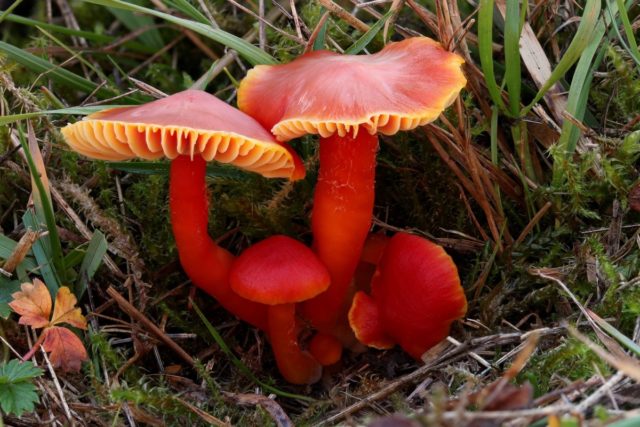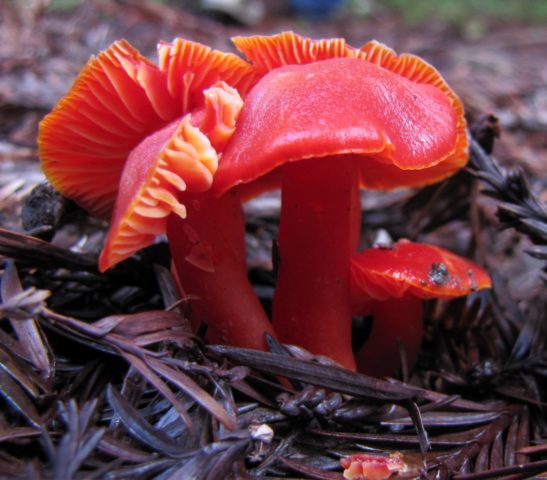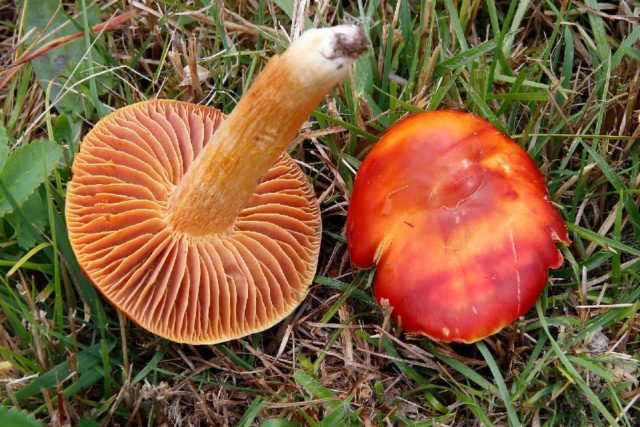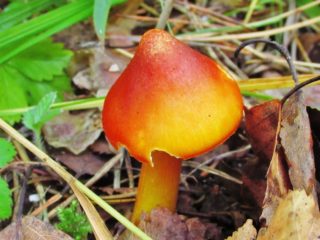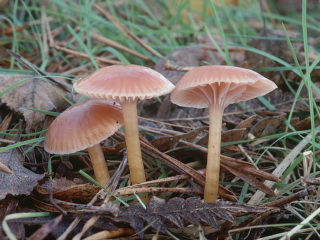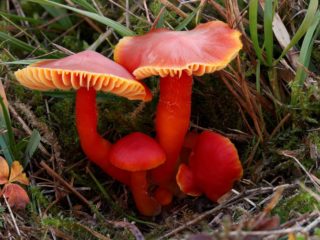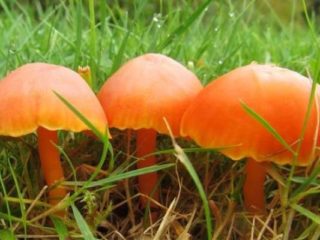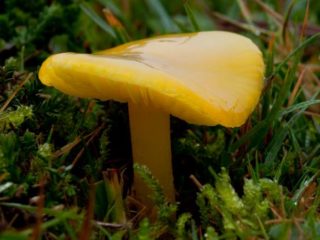Content
Hygrocybe crimson is an edible specimen of the Hygrophoraceae family. The mushroom belongs to the lamellar species; it can be distinguished by its small size and bright red color. In order not to harm your health and not to collect inedible specimens, you need to know the detailed description, look at photos and video materials.
What does Hygrocybe crimson look like?
Getting acquainted with the species must begin with external data. The cap of young specimens is bell-shaped; as it matures, it partially straightens, leaving a small elevation in the center. The furrowed surface is mucous, bright red or orange in color.
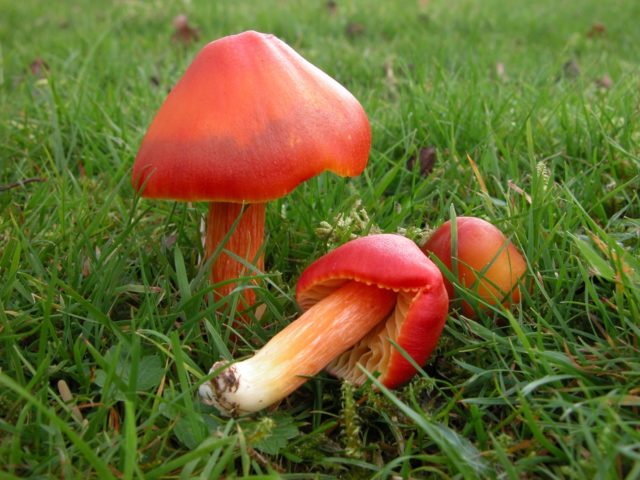
In rainy weather the mushroom becomes covered with mucus
The spore layer consists of thick, sparsely planted plates.At the beginning of growth they are colored pale orange, then they become rich red. Reproduction occurs through colorless, ovoid, medium-sized spores.
The hollow leg is thick and long. The surface is furrowed and bright red. The reddish pulp is strong, fleshy, with a pleasant mushroom taste and aroma. Due to its high nutritional qualities, the mushroom is widely used in cooking.
Where does Hygrocybe crimson grow?
Hygrocybe crimson grows in mixed forests on acidified soil. The species is widespread, living in close groups in open areas. Fruits from June to August. Widely distributed in Siberian forests and the Far East.
Is it possible to eat Hygrocybe crimson?
Hygrocybe crimson is an edible specimen. Due to its good taste and aroma, the mushroom is classified in the second group of edibility.
False doubles
Hygrocybe crimson, like any representative of the gifts of the forest, has similar doubles. Such as:
- Cinnabar red - an inedible member of the family. You can recognize it by its small outstretched orange-red cap. At a young age, the surface is scaly, becoming smooth as it grows. In rainy weather, the cap becomes covered with a mucous layer. The cylindrical stem is fragile, thin, and colored to match the cap. Red-orange pulp without pronounced taste or smell. The species is common in open forest clearings, mossy grass forests, and wetlands.
Fruits throughout the warm period
- Bagryannaya – this representative belongs to the 4th group of edibility. The small fruiting body has a cone-shaped cap, which straightens as it grows. In adult specimens, the surface is spread out and the edges are transparent.In humid weather, the scarlet skin is covered with a mucous layer. The leg is thin and long. The hollow leg is red on top and turns orange closer to the base. Prefers moist, open places. Due to the lack of taste and smell, the species does not have high nutritional value.
Fruits in the fall until the first frost
- Intermediate - conditionally edible species. Grows in spruce and deciduous forests on fertile soil. The fruit body is small, the outstretched cap with torn edges is red-brown. The fibrous stalk is thick and long. Whitish pulp without pronounced taste and smell.
The mushroom has no nutritional value
The crimson hygrocybe differs from all of the above twins in its large size.
Collection rules
Mushroom picking is carried out in dry, sunny weather. Since the mushroom, like a sponge, absorbs toxic substances, the collection site is chosen away from roads and industrial enterprises. When a species is discovered, in order not to damage the mycelium, it is cut off with a sharp knife or carefully twisted out. The growth site is covered with earthen or leafy substrate.
Since Hygrocybe crimson has lookalikes that are not eaten, it is important to be sure of the authenticity of the species. Experienced mushroom pickers recommend that when meeting an unfamiliar specimen, do not pick it, but pass by.
Use
Hygrocybe crimson is valued by mushroom pickers due to its pleasant taste and smell. After heat treatment, the mushroom harvest is consumed fried and stewed. It can be canned and frozen for the winter. Pickled mushrooms are considered the most delicious.
Despite its edibility, Hygrocybe crimson is not recommended for use by children under 7 years of age, pregnant women, or people with stomach diseases.
Conclusion
Hygrocybe crimson is a tasty mushroom that grows in open areas in mixed forests. Fruits in the second half of summer. In cooking they are used in fried and canned form. Since the mushroom has false brothers, it is important to know the external data, view photos and videos.
